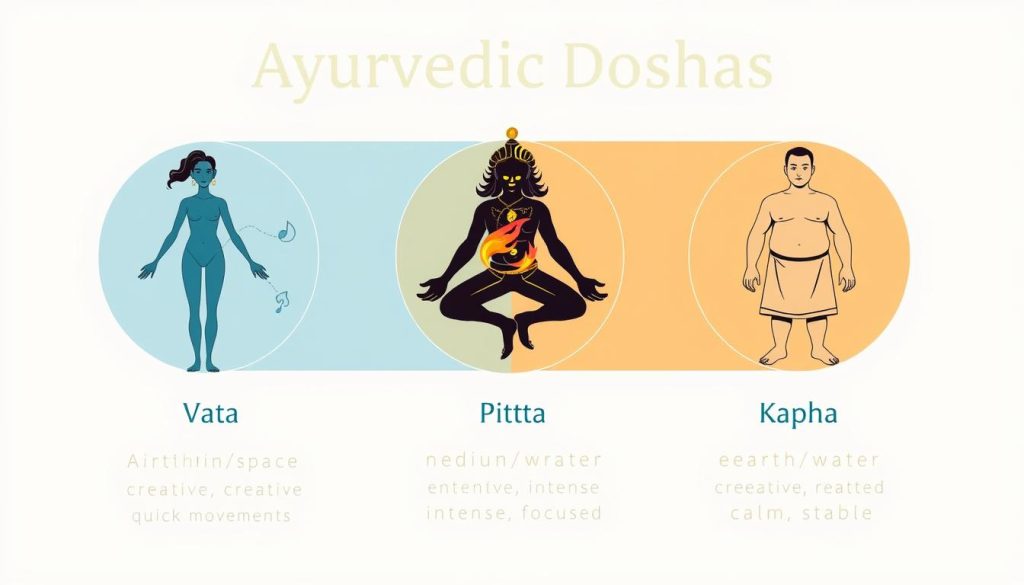The Origins and Philosophy of Ayurveda
The name “Ayurveda” derives from two Sanskrit words: “ayuh” meaning life or longevity, and “veda” meaning science or sacred knowledge. This “science of life” originated during the Vedic period of ancient India, with its earliest references appearing in scholarly texts called the Vedas, particularly the Atharva Veda.
At its core, Ayurveda views health as more than just the absence of disease. The Sanskrit word for health, “svastha,” describes a state where mind, soul, and senses interact harmoniously to experience wellness and even bliss. This holistic perspective recognizes that physical health is inseparable from mental and spiritual well-being.
After centuries of development, Ayurveda faced challenges during periods of political struggle in India, particularly during British colonization. However, practitioners kept the tradition alive, and following India’s independence in 1947, Ayurveda resurged as a major healthcare system. During the 1980s, it began gaining recognition in Western countries, alongside growing interest in yoga and Eastern approaches to wellness.
Key Principles of Ayurveda
Understanding Ayurveda begins with grasping its fundamental principles—the lenses through which it views the universe and human health. These concepts provide the foundation for interpreting nature’s laws, identifying various states of balance or imbalance, and creating personalized paths toward improved well-being.
The Five Elements

Ayurveda recognizes five elements as the fundamental building blocks of nature:
- Earth (Prithvi) – representing solidity and structure
- Water (Jala) – providing fluidity and cohesion
- Fire (Agni) – offering transformation and metabolism
- Air (Vayu) – creating movement and communication
- Ether/Space (Akasha) – providing the field in which everything exists
Every substance in existence contains all five elements, though in varying proportions. These elements combine in different ways to create the three doshas—the biological energies that govern all physical and mental processes in the body.
The Three Doshas: Understanding Your Ayurvedic Constitution

The doshas—Vata, Pitta, and Kapha—are the cornerstone of Ayurvedic understanding. Each person has a unique combination of these three energies, with one or two typically predominant. This individual constitution, or “prakriti,” is determined at conception and remains constant throughout life.
Vata Dosha (Space + Air)
Vata governs movement and is considered the leader of the three doshas. It controls breathing, circulation, nerve impulses, and elimination. People with a predominant Vata constitution tend to be:
- Creative, quick-thinking, and adaptable
- Thin with a light frame and cool, dry skin
- Energetic with variable appetite and digestion
- Prone to anxiety, insomnia, and constipation when imbalanced
Pitta Dosha (Fire + Water)
Pitta governs transformation, including digestion, metabolism, and temperature regulation. Those with a predominant Pitta constitution typically are:
- Intelligent, focused, and ambitious
- Medium build with warm skin and sharp features
- Strong digestion with hearty appetite
- Prone to inflammation, irritability, and acid reflux when imbalanced
Kapha Dosha (Earth + Water)
Kapha governs structure and cohesion, providing stability and lubrication. People with a predominant Kapha constitution tend to be:
- Calm, loving, and patient
- Solid build with cool, oily skin
- Steady energy with slow, methodical digestion
- Prone to weight gain, congestion, and lethargy when imbalanced
Balance and Imbalance: The Key to Ayurvedic Health

Ayurveda teaches that like increases like, and opposites balance. When the doshas accumulate beyond healthy limits for your constitution, imbalance occurs, potentially leading to disease. Your current state of balance, or “vikriti,” can change throughout your life due to diet, lifestyle, seasons, stress, and aging.
Signs of doshic imbalance include:
| Dosha Type | Common Imbalance Symptoms |
|---|
| 🌀 Vata Imbalance | – Anxiety and worry – Constipation – Dry skin – Poor circulation – Insomnia |
| 🔥 Pitta Imbalance | – Irritability and anger – Acid reflux – Inflammation – Skin rashes – Excessive hunger |
| 🌿 Kapha Imbalance | – Lethargy and depression – Weight gain – Congestion – Water retention – Excessive sleep |
Restoring balance involves introducing qualities opposite to the aggravated dosha. For example, if you’re experiencing a pitta imbalance with symptoms like irritability and inflammation, incorporating cooling, calming practices and foods can help restore equilibrium.
Benefits of Ayurveda

Ayurveda offers numerous benefits through its holistic approach to health and wellness. Unlike systems that treat symptoms in isolation, Ayurveda addresses the whole person—body, mind, and spirit—creating comprehensive healing and prevention.
| Physical Benefits | Mental and Emotional Benefits |
|---|---|
| Improved digestion and metabolism | Decreased stress and anxiety |
| Enhanced immune function | Enhanced mental clarity |
| Better sleep quality | Improved focus and concentration |
| Reduced inflammation | Emotional stability |
| Natural detoxification | Greater self-awareness |
| Balanced weight management | Increased resilience |
Research has shown that Ayurvedic practices can help manage chronic conditions like arthritis, high blood pressure, and digestive disorders. The emphasis on prevention makes Ayurveda particularly valuable for maintaining long-term health and addressing imbalances before they develop into serious conditions.
Common Ayurvedic Practices
Ayurveda offers a rich array of practices to maintain balance and promote health. These time-tested approaches can be integrated into modern lifestyles for improved well-being.
Ayurvedic Diet

Diet is considered one of the most powerful tools in Ayurveda. Rather than prescribing a one-size-fits-all approach, Ayurvedic nutrition is tailored to your individual constitution and current imbalances.
| Vata-Balancing Diet | Pitta-Balancing Diet | Kapha-Balancing Diet |
|---|---|---|
| Warm, cooked foods | Cooling, fresh foods | Light, warm, dry foods |
| Healthy oils and fats | Sweet, bitter, and astringent tastes | Pungent, bitter, and astringent tastes |
| Sweet, sour, and salty tastes | Moderate amounts of dairy | Plenty of spices |
| Regular meal times | Plenty of vegetables | Lighter meals |
| Limit raw foods and beans | Limit spicy, sour, and salty foods | Limit sweet, sour, and salty food |
Herbal Remedies

Ayurvedic herbs are used to restore balance and support overall health. These powerful botanicals are typically prescribed based on your specific constitution and current imbalances.
Key Ayurvedic Herbs and Their Benefits
| Herb | Primary Benefits | Best For |
| Ashwagandha | Reduces stress, boosts immunity, improves sleep | Vata imbalance, anxiety, fatigue |
| Turmeric | Anti-inflammatory, antioxidant, supports digestion | Pitta imbalance, inflammation, skin issues |
| Triphala | Gentle detoxification, digestive support, rejuvenation | All doshas, constipation, cleansing |
| Brahmi | Enhances memory, reduces anxiety, supports brain health | Vata and Pitta imbalance, mental clarity |
| Shatavari | Hormonal balance, reproductive health, cooling | Pitta imbalance, women’s health |
Daily Routine (Dinacharya)

Establishing a consistent daily routine is fundamental in Ayurveda. This practice, known as dinacharya, helps align your body with nature’s rhythms and supports optimal dosha balance.
Elements of an Ayurvedic Morning Routine
- Wake before sunrise – Ideally between 5-6 AM during the Vata time of day
- Tongue scraping – Remove ama (toxins) that accumulated overnight
- Oil pulling – Swish oil in mouth for dental and overall health
- Self-massage (Abhyanga) – Apply warm oil to nourish tissues and calm the nervous system
- Nasal cleansing (Nasya) – Apply oil to nasal passages for clarity
- Yoga and meditation – Practice gentle movement and mindfulness
- Warm water with lemon – Stimulate digestion before breakfast
Yoga and Meditation

Yoga and meditation are sister sciences to Ayurveda, working together to balance the body and mind. Different yoga practices can help balance specific doshas:
| For Vata Balance | For Pitta Balance | For Kapha Balance |
|---|---|---|
| Slow, grounding poses | Cooling, moon salutations | Vigorous, flowing sequences |
| Longer holds | Forward bends | Sun salutations |
| Regular practice | Avoid overexertion | Backbends and inversions |
| Focus on standing poses | Practice with non-competitive attitude | Stimulating practice |
Panchakarma: Ayurvedic Detoxification

Kerala Panchakarma therapy session at Sai Ayush Ayurveda
Panchakarma is Ayurveda’s premier detoxification and rejuvenation program. This systematic approach removes accumulated toxins and restores doshic balance through a series of therapeutic treatments.
The five main procedures of Panchakarma include:
- Vamana – Therapeutic emesis to remove excess Kapha
- Virechana – Purgation therapy to remove excess Pitta
- Basti – Herbal enema therapy to remove excess Vata
- Nasya – Nasal administration of herbs to clear the head and sinuses
- Rakta Mokshana – Blood purification (rarely practiced in modern settings)
Panchakarma is typically performed under the guidance of qualified Ayurvedic physicians and is customized to your specific constitution and imbalances. The treatment process usually spans 7-21 days and includes preparatory practices, the main procedures, and post-treatment care.
Integrating Ayurveda into Modern Life

You don’t need to completely overhaul your life to benefit from Ayurvedic wisdom. Here are practical ways to incorporate Ayurvedic principles into your modern lifestyle:
Simple Daily Practices
- Start with one practice – Begin with tongue scraping or warm lemon water in the morning
- Eat mindfully – Avoid multitasking during meals and chew thoroughly
- Spice up your cooking – Incorporate dosha-balancing spices like turmeric, cumin, and coriander
- Stay hydrated – Drink warm or room temperature water throughout the day
- Take mini breaks – Practice brief meditation or deep breathing during your workday
- Adjust for seasons – Modify your diet and routine as seasons change
- Oil massage – Even a quick self-massage with warm oil before showering is beneficial
Creating a Sustainable Ayurvedic Lifestyle
The key to successfully integrating Ayurveda is consistency and gradual implementation. Rather than making dramatic changes, focus on incorporating one practice at a time until it becomes habitual before adding another.
“Ayurveda is not about quick fixes or temporary solutions. It’s about creating sustainable habits that support your unique constitution and lead to lasting health and vitality.”
Consider working with a qualified Ayurvedic practitioner who can provide personalized guidance based on your specific constitution and current imbalances. This individualized approach will help you focus on the practices that will benefit you most.
Frequently Asked Questions About Ayurveda
What are the three doshas in Ayurveda?
The three doshas are Vata (air and space), Pitta (fire and water), and Kapha (earth and water). These biological energies govern all physical and mental processes in the body. Everyone has a unique combination of these doshas, with one or two typically predominant in their constitution.
Is Ayurveda scientifically proven?
While Ayurveda has thousands of years of observational evidence, modern scientific research on Ayurvedic practices is still developing. Some Ayurvedic herbs and practices have been scientifically validated—for example, turmeric’s anti-inflammatory properties and meditation’s stress-reduction benefits. Research institutions are increasingly studying Ayurvedic approaches, though more comprehensive clinical trials are needed.
How do I determine my dosha type?
Your dosha type or constitution (prakriti) can be determined through assessment by a qualified Ayurvedic practitioner. They will evaluate physical characteristics, mental tendencies, and behavioral patterns. Many online quizzes can provide a preliminary understanding, but a professional consultation offers the most accurate assessment and personalized recommendations.
Can Ayurveda help with specific health conditions?
Ayurveda approaches health conditions by addressing underlying imbalances rather than just treating symptoms. It has shown promise for managing chronic conditions like digestive disorders, skin problems, stress-related ailments, and metabolic issues. However, Ayurveda works best as a complementary approach alongside conventional medical care, especially for serious or acute conditions.
How long does it take to see results with Ayurvedic practices?
The timeline for experiencing benefits varies depending on your constitution, the nature of your imbalance, and your consistency with the practices. Some effects, like improved digestion or better sleep, may be noticed within days or weeks. Deeper healing and constitutional changes typically take longer—often 3-6 months of consistent practice. Ayurveda emphasizes gradual, sustainable transformation rather than quick fixes.
Embracing the Wisdom of Ayurveda

ayurveda three doshas
Ayurveda offers a profound framework for understanding yourself and your relationship with the natural world. By recognizing your unique constitution and the factors that create balance or imbalance, you gain powerful tools for maintaining health and preventing disease.
The beauty of Ayurveda lies in its personalization—there is no one-size-fits-all approach. Instead, it provides principles that can be adapted to your individual needs and circumstances. Whether you incorporate a few simple practices or embrace a comprehensive Ayurvedic lifestyle, this ancient wisdom can guide you toward greater balance, vitality, and well-being.
As you begin or continue your Ayurvedic journey, remember that small, consistent changes often yield the most sustainable results. Listen to your body, observe how different practices affect you, and adjust accordingly. The path to optimal health is not a destination but an ongoing process of awareness, balance, and harmony.
Discover the healing power of Ayurveda with our latest article at Sai Ayush Ayurveda Hospitals! Dive into the age-old wisdom that can rejuvenate your body and mind. Click here to read more:



0 Comments